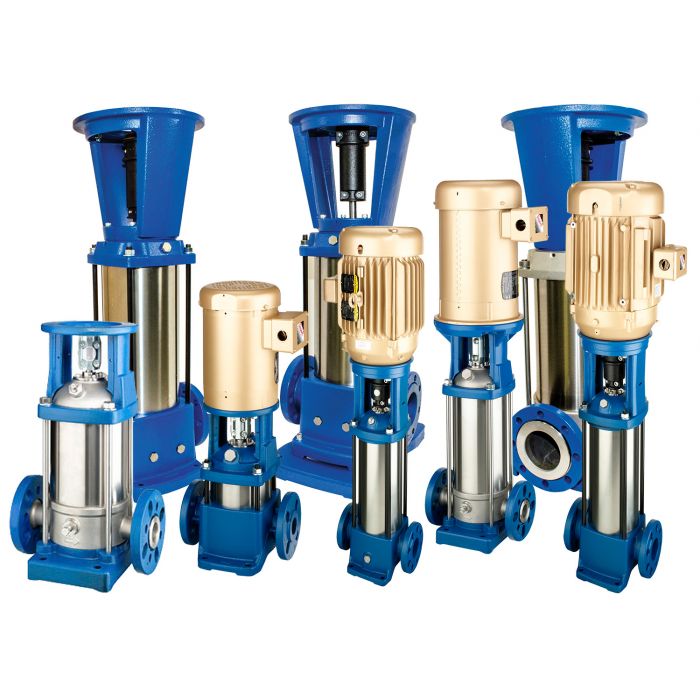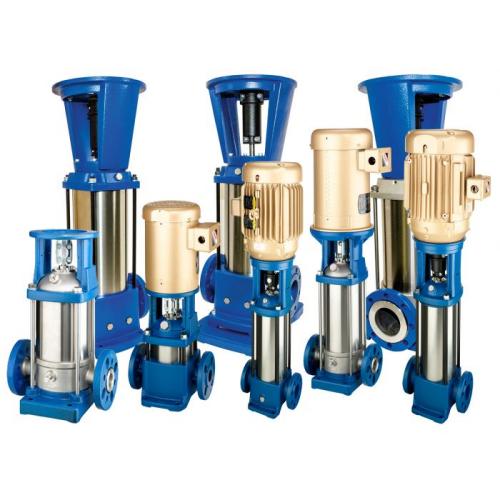

A cryogenic centrifugal pump is a specialized type of pump designed to handle the transfer of extremely cold fluids, typically below -150 degrees Celsius. These pumps are specifically engineered to operate in low-temperature environments and maintain the integrity of the cryogenic fluid throughout the transfer process. They are constructed using materials with high thermal insulation properties to minimize heat transfer from the surroundings and ensure efficient operation.

Cryogenic centrifugal pumps operate on the principle of centrifugal force. When the pump is activated, the impeller inside begins to rotate rapidly, creating a centrifugal force that pushes the cryogenic fluid towards the outer edge of the impeller. As the fluid moves through the pump, it undergoes a series of stages, including suction, compression, and discharge. The combination of centrifugal force and impeller design allows for efficient fluid transfer at low temperatures.
A cryogenic centrifugal pump consists of several essential components, each playing a crucial role in its overall functionality. These components include:
Impeller: The impeller is the rotating component that generates the centrifugal force necessary for fluid transfer.
Casing: The casing surrounds the impeller and directs the fluid flow through the pump.
Shaft: The shaft connects the impeller to the motor, enabling the transfer of rotational energy.
Motor: The motor provides the necessary power to rotate the impeller and drive the pump.
Seals: Seals prevent leakage of cryogenic fluids and maintain the pump's efficiency.
Bearings: Bearings support the rotating components and reduce friction for smoother operation.
Thermal Insulation: Special insulation materials are used to minimize heat transfer to the cryogenic fluid.
Cryogenic centrifugal pumps offer several advantages over other types of pumps when it comes to low-temperature fluid transfer. These advantages include:
Efficiency: Cryogenic centrifugal pumps are designed for optimal efficiency, ensuring maximum fluid transfer rates with minimal energy consumption.
Reliability: These pumps are built to withstand the challenges of handling cryogenic fluids, providing reliable performance even in extreme conditions.
Versatility: Cryogenic centrifugal pumps can handle a wide range of cryogenic fluids, making them suitable for various applications.
Low Maintenance: With robust construction and high-quality components, cryogenic centrifugal pumps require minimal maintenance, reducing downtime and operational costs.
Safety: The design of cryogenic centrifugal pumps prioritizes safety, incorporating features to prevent leaks and ensure the protection of personnel and equipment.
The versatility of cryogenic centrifugal pumps enables their use in diverse industries and applications, such as:
Medical and Healthcare: Cryogenic centrifugal pumps play a crucial role in the storage and transfer of cryogenic fluids used in medical imaging, cryosurgery, and cryopreservation of biological samples.
Aerospace: These pumps are utilized in space exploration missions for the storage and transfer of cryogenic propellants, such as liquid hydrogen and liquid oxygen.
Energy and Power Generation: Cryogenic centrifugal pumps assist in the liquefaction and storage of natural gas, enabling its efficient transportation and use as a clean energy source.
Research and Development: Laboratories and research facilities rely on cryogenic centrifugal pumps for various experimental applications involving low-temperature fluids.
Selecting the appropriate cryogenic centrifugal pump for a specific application requires careful consideration of several factors, including:
Flow Rate: Determine the required flow rate of the cryogenic fluid to ensure the pump can handle the desired volume efficiently.
Pressure Requirements: Evaluate the operating pressure range needed for the application and select a pump that can deliver the required pressure.
Material Compatibility: Consider the compatibility of the pump's materials with the cryogenic fluid to prevent corrosion or degradation.
Temperature Range: Ensure that the pump is designed to handle the specific low-temperature range of the cryogenic fluid.
Reliability and Maintenance: Assess the pump's reliability track record and maintenance requirements to minimize operational disruptions.
Proper installation and regular maintenance are essential to ensure the optimal performance and longevity of cryogenic centrifugal pumps. Some key practices to follow include:
Professional Installation: Have the pump installed by qualified technicians who are experienced in handling cryogenic equipment.
Regular Inspections: Conduct routine inspections to identify any signs of wear, leaks, or other issues that may affect the pump's performance.
Scheduled Maintenance: Adhere to a preventive maintenance schedule, including lubrication, seal replacement, and bearing inspections.
Safety Procedures: Follow recommended safety protocols when working with cryogenic fluids and operating the pump.
When dealing with cryogenic fluids, safety should always be a top priority. Some important safety considerations include:
Personal Protective Equipment: Wear appropriate protective clothing, including gloves, safety glasses, and face shields, when handling cryogenic fluids.
Ventilation: Ensure proper ventilation in areas where cryogenic fluid transfer takes place to prevent the buildup of hazardous gases.
Emergency Procedures: Establish and communicate emergency response procedures, including spill containment and evacuation protocols.
Training and Education: Provide thorough training to personnel involved in the operation and maintenance of cryogenic centrifugal pumps.
The field of cryogenic centrifugal pumps continues to evolve, driven by advancements in materials, design, and manufacturing processes. Future developments may include:
Enhanced Efficiency: Ongoing research aims to further improve the efficiency of cryogenic centrifugal pumps, reducing energy consumption and enhancing overall performance.
Advanced Materials: The development of new materials with superior thermal insulation properties can contribute to improved pump efficiency and reliability.
Smart Pumping Systems: Integration of sensor technology and data analysis capabilities can enable real-time monitoring and predictive maintenance of cryogenic centrifugal pumps.
Miniaturization: Advancements in miniaturization techniques may lead to the development of smaller, more compact cryogenic centrifugal pumps suitable for portable applications.

Conclusion
Cryogenic centrifugal pumps play a vital role in facilitating the efficient and reliable transfer of low-temperature fluids in various industries. With their unique design and specialized features, these pumps ensure the safe handling of cryogenic fluids while maintaining high levels of efficiency and reliability. As technology continues to advance, we can expect further improvements in cryogenic centrifugal pump performance, enabling even greater possibilities for low-temperature fluid transfer applications.
FAQs
Cryogenic centrifugal pumps are designed to handle extremely low temperatures, typically below -150 degrees Celsius.
Yes, cryogenic centrifugal pumps are versatile and can handle various cryogenic fluids, including liquid nitrogen, liquid oxygen, and liquefied natural gas.
Yes, these pumps are designed for optimal efficiency, ensuring maximum fluid transfer rates while minimizing energy consumption.
While cryogenic centrifugal pumps require regular maintenance, they are designed for low maintenance requirements, reducing downtime and operational costs.
Yes, cryogenic centrifugal pumps are widely used in medical applications, including cryosurgery, medical imaging, and cryopreservation of biological samples.

Address : No. 2, Xiayang Industrial Zone, Deqing County, Huzhou City, Zhejiang Province, China.
Email : sales@shoufeipump.com Mobile: +86-136-6574-2262 Phone: 86-0572-8355383